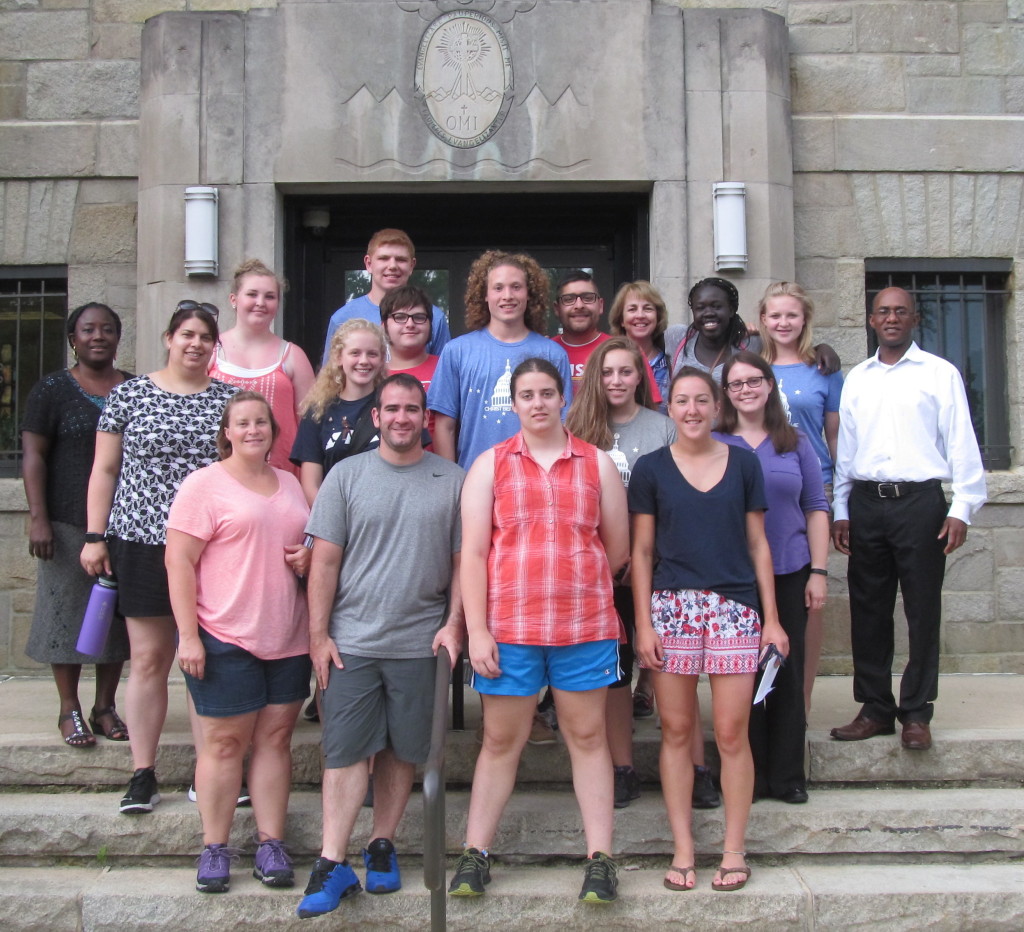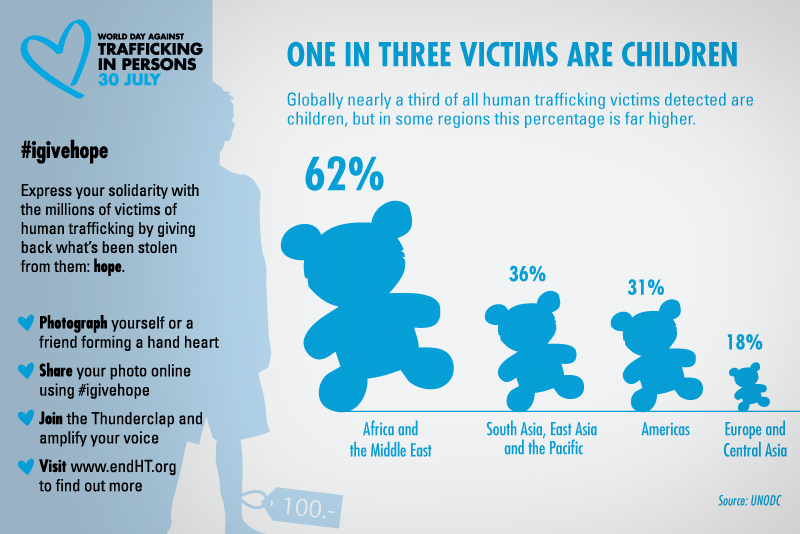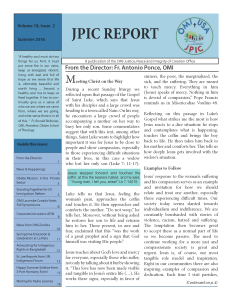News Archives » About
OMI JPIC Hosts Youth Group from Alaska and Bishop D’Cruze of Bangladesh August 9th, 2016
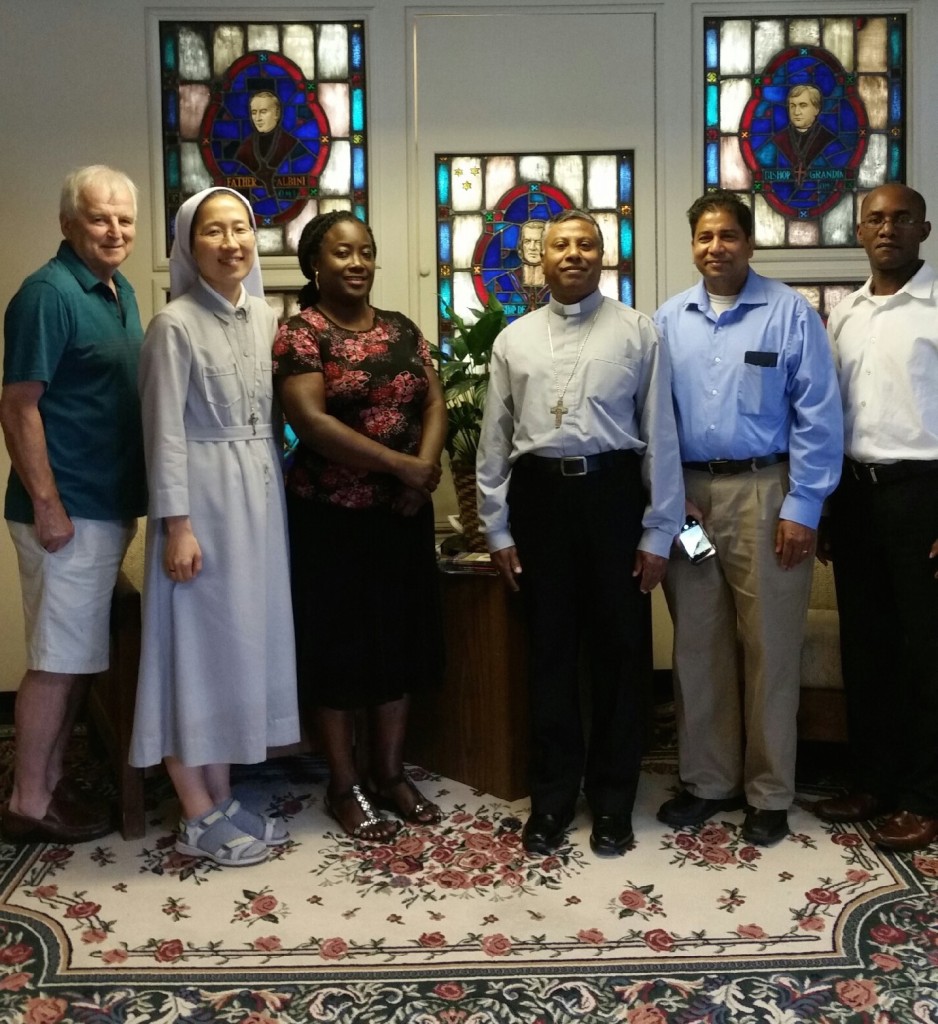
Bishop Bejoy D’Cruze, OMI, of the Diocese of Sylhet, Bangladesh visited JPIC offices on July 29. (Left to right): Fr. Seamus Finn, OMI, Sr. Nathanael Lee, LSHF, Rowena Gono, Bishop Bejoy D’Cruze, OMI, (Francis, a colleague of Bishop D’Cruze), George Ngolwe
Zambian Oblate Bishop Chinyemba: Your Peaceful Votes Do Count August 1st, 2016
 In a stinging analysis, Zambia’s Diocese of Mongu Bishop, Evans Chinyemba has decried Zambia’s deteriorating media freedoms and said that the country would in two weeks’ time (11 August) conduct general elections under the climate of public service media that only speak for the party in power. He has since urged the Zambian government to stop abusing the public service media sector for its ends.
In a stinging analysis, Zambia’s Diocese of Mongu Bishop, Evans Chinyemba has decried Zambia’s deteriorating media freedoms and said that the country would in two weeks’ time (11 August) conduct general elections under the climate of public service media that only speak for the party in power. He has since urged the Zambian government to stop abusing the public service media sector for its ends.
-
Read the article on Vatican Radio.
-
Read Bishop Evans Chinyemba’s statement on Zambia’s upcoming election.
July 30 is World Day Against Human Trafficking July 29th, 2016
“This immense task, which calls for courage, patience and perseverance, deserves the appreciation of the whole Church and society. Yet, of itself, it is not sufficient to end the scourge of the exploitation of human persons. There is also need for a threefold commitment on the institutional level: to prevention, to victim protection and to the legal prosecution of perpetrators. Moreover, since criminal organizations employ global networks to achieve their goals, efforts to eliminate this phenomenon also demand a common and, indeed, a global effort on the part of various sectors of society.” (No Longer slaves, but brothers and sisters, Pope Francis’ message for World Day of Peace, 2015)
In 2013 the UN adopted a resolution designating July 30 as the World Day Against Human Trafficking to “raise awareness of the situation of victims of human trafficking and for the promotion and protection of their rights.”
The International Labor Organization estimates that 21 million people worldwide are victims of human trafficking. Human trafficking is a crime that exploits women, children and men for numerous purposes including forced labor and sex. Every country in the world is affected by human trafficking, whether as a country of origin, transit or destination for victims.
Source: United Nations Office on Drugs and Crime
- Read a book review I Have a Voice – Trafficked Women – in their own words by Mary O’Herron
- Read a July 19 speech by Archbishop Bernardito Auza, Holy See Permanent Observer at the United Nations on eliminating the trafficking of children and young people
- Visit the UN Office on Drugs and Crime for more information and ways to get involved
Book Review: I Have a Voice – Trafficked Women – in their own words July 29th, 2016
I Have a Voice – Trafficked Women – in their own words
Sr. Angela Reed, RSM, and Marietta Latonio
Illustrations by Sr. Venus Marie Pegar, SFX
Published by Our Community Pty Ltd, Melbourne, Australia
Order the book
Read about book’s author
Book review by: Mary O’Herron
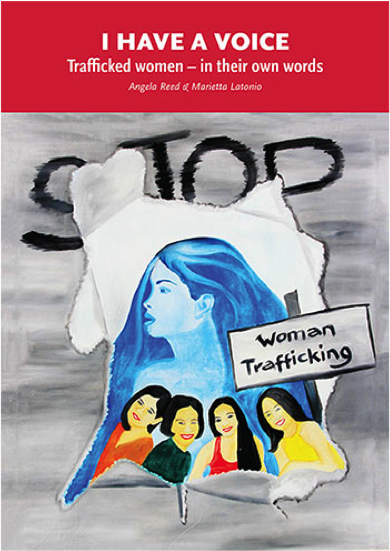 This book tells stories in words and powerful pictures of 22 women involved in human trafficking in Cebu City, Philippines, and is based on a study by Sr. Angela Reed, RSM.
This book tells stories in words and powerful pictures of 22 women involved in human trafficking in Cebu City, Philippines, and is based on a study by Sr. Angela Reed, RSM.
The stories, though usually only a page, are very tough to read: often of young girls pushed or lured into prostitution
In one section of the book called Points to Ponder, some generalities emerge – these are the conditions that create vulnerability to trafficking of those whose stories are told in this book.
Family-of-origin poverty (The author points out that many people in the world are poor, but not all are trafficked, so other factors besides poverty play a part in creating vulnerability. She found that family situations played a very large part. Violence, drugs, alcohol abuse and a sense of low value put on individuals in the family created conditions that led to these girls being abused outside the family or being trafficked.
Isolation – living in rural areas, especially where there were scant educational opportunities, intersecting with some of these other conditions contributed to vulnerability.
Drugs and alcohol abuse — by parents or other close family members played a part in many of the stories.
Absence of mothers and fathers — for a variety of reasons was commonplace in the stories. Grandmothers often became caregivers.
Abuse, including sexual abuse of children by family members or close members of their communities – as well as other physical, emotional, verbal and financial abuses were often present in their lives before being trafficked. The girls in these stories often stayed quiet about abuse because they had no one with whom they could talk about it – no one they could trust. The effects of childhood abuse can play out later in life – depression, guilt, shame, self-blame, eating disorders, anxiety, and denial. It can affect relationships causing them to be unhealthy and harmful.
Educational opportunities were sparse or non-existent for many of these women. Most did not get beyond elementary school. Abuse, especially sexual abuse, can affect ability to learn and understand. Peers offered support at times in these stories but sometimes encouraged the use of drugs and alcohol.
Many in these stories started working as domestic helpers, which are noted for low wages and often abuse.
General Format of the book:
The book is divided into three basic sections and has:
- The story told by one of the women/girls.
- An illustration of her and symbols of her story.
- Reflection questions for the reader.
- A section placing each part into context.
Basic take-away from this book: family of origin plays a huge part in creating vulnerability to trafficking, especially where poverty, isolation, violence, drug, alcohol and other abuses are present.
Our 2016 Summer JPIC Report is Now Available! July 28th, 2016
Our 2016 Summer JPIC Report is now available online! JPIC Report is the twice-yearly newsletter of the US Oblate JPIC Office. It is an informational resource about and for Oblates and others involved in the work of promoting justice, peace and the integrity of creation.
Download a PDF version of the newsletter here.
You can also download past issues of the JPIC Report in the Resources section of the website.


